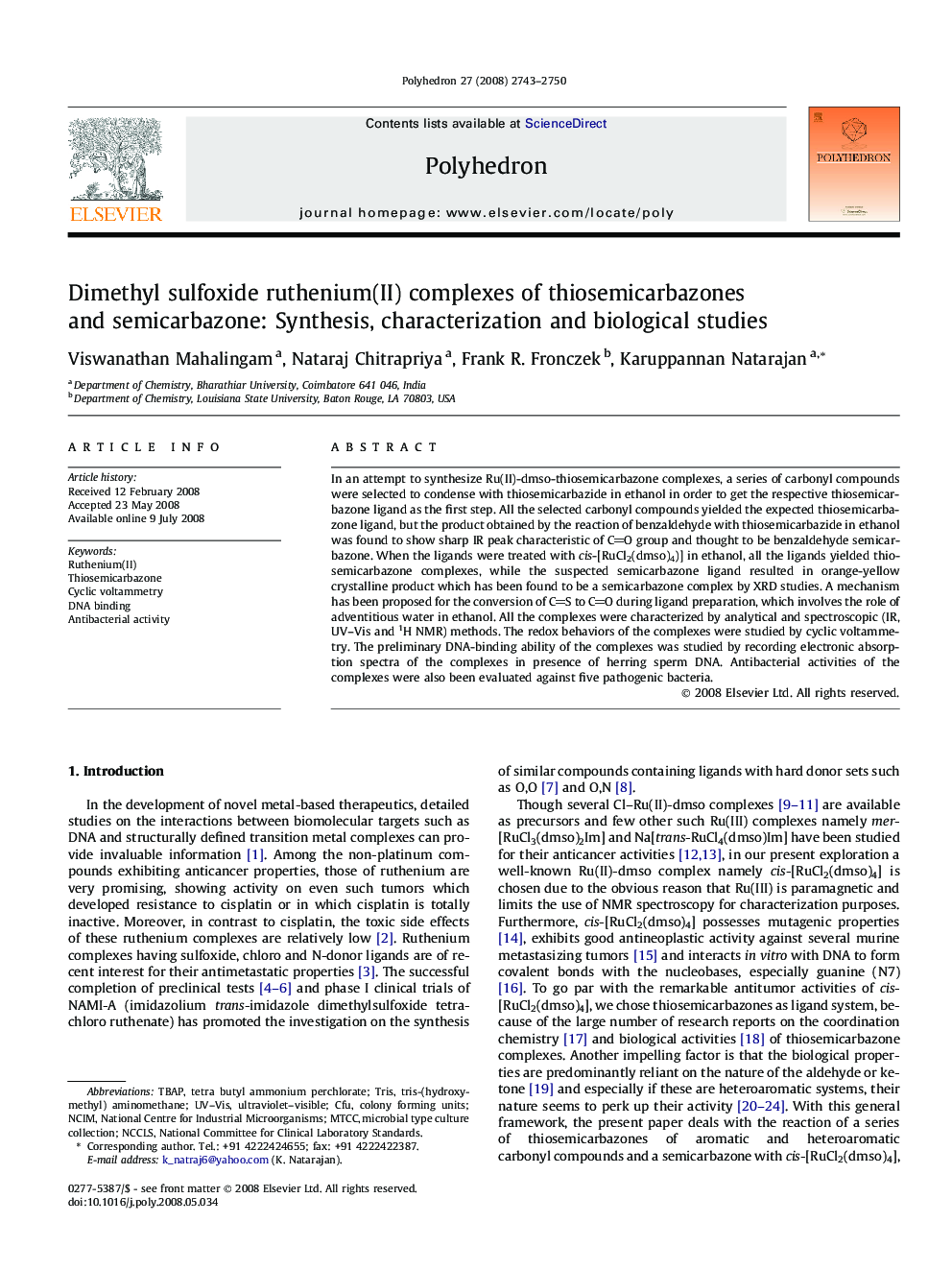| Article ID | Journal | Published Year | Pages | File Type |
|---|---|---|---|---|
| 1340334 | Polyhedron | 2008 | 8 Pages |
In an attempt to synthesize Ru(II)-dmso-thiosemicarbazone complexes, a series of carbonyl compounds were selected to condense with thiosemicarbazide in ethanol in order to get the respective thiosemicarbazone ligand as the first step. All the selected carbonyl compounds yielded the expected thiosemicarbazone ligand, but the product obtained by the reaction of benzaldehyde with thiosemicarbazide in ethanol was found to show sharp IR peak characteristic of CO group and thought to be benzaldehyde semicarbazone. When the ligands were treated with cis-[RuCl2(dmso)4)] in ethanol, all the ligands yielded thiosemicarbazone complexes, while the suspected semicarbazone ligand resulted in orange-yellow crystalline product which has been found to be a semicarbazone complex by XRD studies. A mechanism has been proposed for the conversion of CS to CO during ligand preparation, which involves the role of adventitious water in ethanol. All the complexes were characterized by analytical and spectroscopic (IR, UV–Vis and 1H NMR) methods. The redox behaviors of the complexes were studied by cyclic voltammetry. The preliminary DNA-binding ability of the complexes was studied by recording electronic absorption spectra of the complexes in presence of herring sperm DNA. Antibacterial activities of the complexes were also been evaluated against five pathogenic bacteria.
Graphical abstractA family of new Cl–Ru(II)-dmso complexes of thiosemicarbazones along with benzaldehyde semicarbzone has been prepared and characterized. The benzaldehyde semicarbazone ligand has been obtained by the reaction of benzaldehyde and thiosemicarbazide in ethanol through water assisted conversion of CS to CO. The previously structurally uncharacterized [RuCl2(dmso)2(benzaldehyde semicarbazone)] complex has been characterized by single crystal XRD studies. The redox behavior of the complexes has been studied by cyclic voltammetry. The antibacterial activity and preliminary DNA-binding ability of the complexes has also been studied.Figure optionsDownload full-size imageDownload as PowerPoint slide
